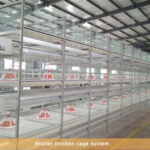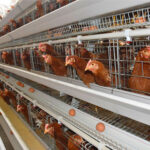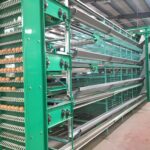What are the pros and cons of using cages and flat to raise chickens?
Scale must be a trend and an irreversible trend. There are many factors in this decision. First of all, from the perspective of competitiveness, large-scale chicken farms must have more strength to develop, innovate, export, and resist imported egg products; secondly, from the aspects of food safety, administrative management, taxation and environmental protection, scale Chicken farms have more advantages. The market capacity is so large, and the process of large-scale advancement is naturally accompanied by the demise of small-scale chickens.
Do you want to know the advantages and disadvantages of cage and flat to raise chicken?
The benefits of caged chickens: using layer chicken battery cages to raise chickens can increase feed density, which is more than three times that of flat chickens, and can range from 13 to 17 per square meter. Cage raising chickens can save feed and reduce feed expenses. As the cage chickens have smaller activity areas, the amount of exercise will be reduced, energy consumption will be less, and the amount of wasted feed will be relatively reduced. Cage chickens do not touch the feces, which is conducive to the prevention of flocks, and artificial insemination can be carried out in caged chickens. This can greatly reduce the proportion of cocks raised, and the laying hens can clean eggs and eliminate the loss of eggs outside the nest.

The disadvantages of caged chickens: Compared with flat chickens, caged chickens have a larger investment, and the proportion of blood spots is higher, the quality of eggs is relatively poor, and the egg production of caged chickens is relatively lower than that of flat chickens. Caged chicken is prone to sudden death syndrome.
The pros and cons of flat chicken farming
Advantages of flat chickens: compared with cage-raised chickens, flat chickens have less investment and can eat grains of sand, which is conducive to digestion and improves egg production and egg quality. Because the breeding area is large, the flat chicken provides a large activity space for the chicken.
The disadvantages of flat chicken breeding: flat chicken breeding density is relatively small, breeding density is scarce directly affect the total production of breeding, and flat chicken manure is not easy to clean, long-term contact with feces, air is not fresh, easy to cause disease, and directly infect the whole chicken flock, resulting in a large proportion of mortality.
There are pros and cons to keeping chickens in cages and keeping them in peace. Farmers need to make decisions according to their personal conditions when choosing, but caged chicken has become an inevitable development trend in the field of chicken raising in the future. For long-term chicken farmers, it is suggested to choose caged chicken to improve the overall economic benefits.










